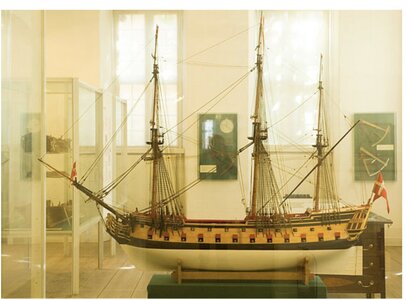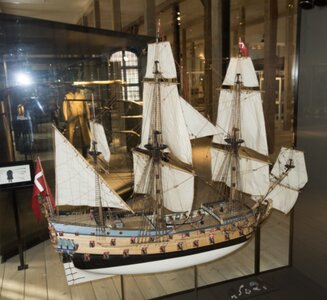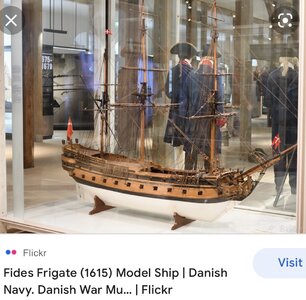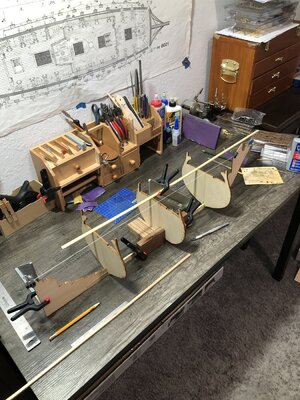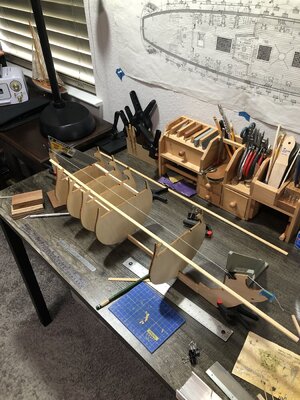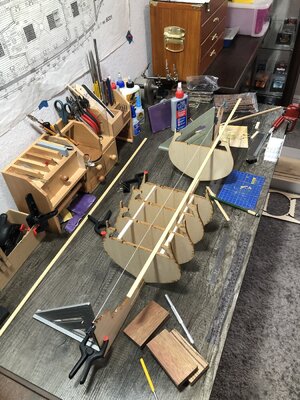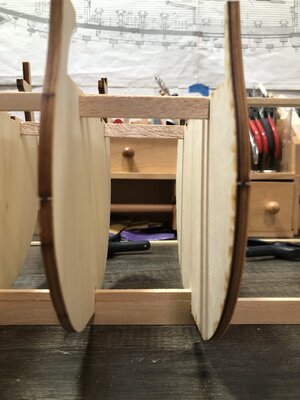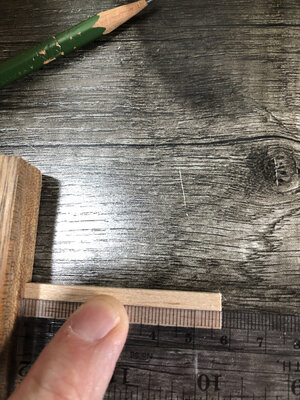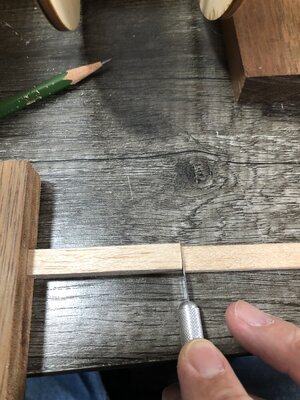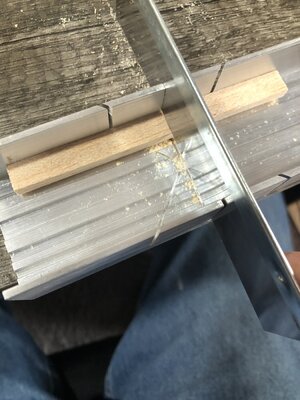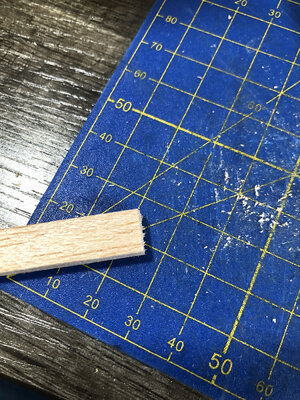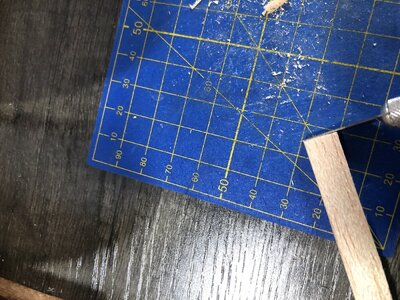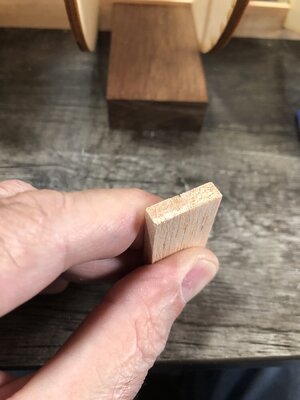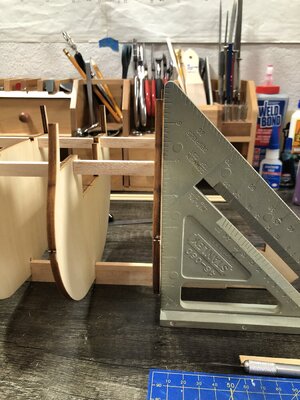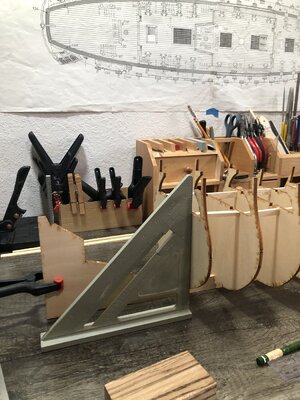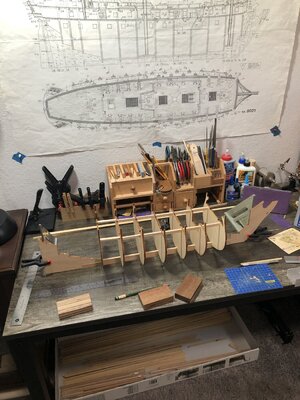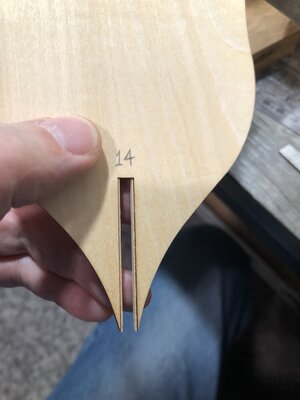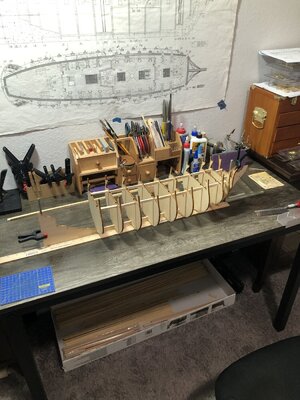There are so many great craftsman on SOS, I am often reluctant to share techniques for fear I am being rhetorical. But I remind myself there are plenty of first time ship builders as well. That said, I will share a technique I use to keep boards square and precise in length. In this case, I need three boards the exact same length, otherwise it can skew my frames and ruin my crucial ship foundation, of the keel and frames.
First, I always ensure my measurements start from the end of the board…
View attachment 259143
I use a block to assist with this. I need 57.5 mm length on three boards.
When the first one is exact, I use it with the block, to copy to a second board. But I use an xacto mark instead of a pencil, because a pencil could add distance.
Then I cut to the right side of the line, in a miter box, ensuring the left side of the saw is on the right side of the line, so as not to loose any length.
View attachment 259144View attachment 259145
Next, there may be some small wood fibers on the end, due to the hand saw. You will be tempted to sand these off…don’t! You normally end up with a convex surface when hand sanding a small board face. To ensure it remains square, I cut any wood fibers on the edge of the board with an xacto knife. This ensures I don’t ruin my square end face on the board.
View attachment 259146View attachment 259147
Then I stand the boards on end to verify they are exactly the same length…
View attachment 259148
Now you have boards that are the same exact length, with square ends, all done by hand. Those who have power tools, will have put this type of technique behind them. But for those who work by hand, this is my technique.
Using these boards (3), I ensured all of my frames were square. 1 board on top of the keel (at the bottom of the frame), and 2 boards (1 on each side) at the top of the frame. This squares the frames to each other, top to bottom, and side to side. Of course I dry fit first, and check with a square in both directions, and then verify with a square once glued.
View attachment 259149View attachment 259150
View attachment 259152





